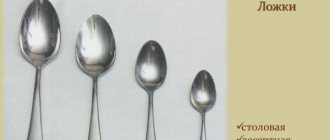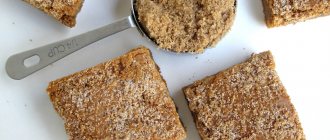Until the beginning of the 18th century, a product such as sugar was a real luxury compared to, for example, meat and chicken, which cost 3.5 kopecks, and a spoonful of sugar cost 15 kopecks. The product became widespread only when people learned to extract it from sugar beets. And Napoleon Bonaparte made his contribution to this process. Now granulated sugar has become widespread throughout the world. According to statistics, 1 person eats approximately 60 kg of sugar annually. Nutritionists consider this white carbohydrate a very harmful product and recommend avoiding it. They highlight its high calorie content and uselessness for the body. Let's try to understand this issue in detail, determine the calorie content of sugar per 100 grams and highlight the main sweeteners.
Calorie content of sugar
Sugar comes in different types:
- reed;
- beet;
- palm;
- maple.
Depending on the cleaning method chosen, it can be yellow or white. All varieties have almost the same number of calories, the difference is only a few units. In the CIS countries, the beetroot type of sweetener predominates.
We recommend reading the article about the dangers of sugar for the human body.
If we take into account the volume of 100 g of sugar, the calorie content will be 399 kilocalories. 99% of the sugar composition is made up of di- and monosaccharides, which make the product so high in calories. Only 1% is allocated to water, iron, sodium and calcium.
The maple variety has a lower calorie content - 354 kcal. This species is widespread in Canada, from where it is exported to other countries. It is made from maple buds.
Below is a table with the number of calories and BJU of sugar:
| Calories, kcal: | 398 |
| Proteins, g: | 0,0 |
| Fats, g: | 0,0 |
| Carbohydrates, g: | 99,7 |
Table of calorie content and nutritional value of different types of sugar
| Name | Calorie content | BZHU for 100 g | ||
| Squirrels | Fats | Carbohydrates | ||
| White (refined) sugar | 398 | 0 | 0 | 99,7 |
| Cane sugar | 385 | 0,21 | 0,04 | 97,61 |
| Coconut sugar | 376 | 1,1 | 0,5 | 94 |
How many calories are in a spoonful of sugar?
Carbohydrates in the form of white powder are often used in cooking and canning, both in the preparation of sweet dishes and desserts, and in basic treats. When creating baked goods, the amount of this ingredient is usually measured in glasses or spoons. Therefore, it will be useful to know how many calories are in 1 teaspoon of sugar, in a tablespoon or in one glass to determine the calorie content of the entire dish as a whole.
Video
A standard tablespoon contains 20 g of granulated sugar. If you pour it in a heap, then 25 g. One gram contains 3.99 kcal. Using simple mathematical calculations, you can find out that a standard-sized level tablespoon contains 80 calories, and a heaped spoon contains 100 calories, respectively.
Why sugar is prohibited in diets
With a properly balanced diet, 30% of carbohydrates in the human body are modified into fats. If you abuse sweets, this figure increases. For reference, the calorie content of a 25 g spoon of sugar is 100 kcal. Therefore, sugary foods are excluded from the diet in many diets, especially reduced diets (obesity, atherosclerosis) and diabetic ones.
The energy value of carbohydrates needs to be known in order to control their consumption. An excess of sweets contributes to metabolic disorders, while a deficiency leads to hypoglycemia.
How many calories are in a teaspoon of sugar?
This information will be useful to those people who cannot do without drinking tea every day, and to coffee lovers. Usually when creating a balanced or dietary menu, many people forget to take into account how many calories are in the granulated sugar that they add to their hot drink. Therefore, they usually exceed the daily sugar requirement and their weight loss process does not bring results.
Please note: A standard size teaspoon holds 5-7 g of loose powder. This amounts to 20-35 calories.
Diets that do not exclude sugar from the menu
You don't have to completely eliminate sugar and sugar-containing foods from your diet to lose weight. The main thing in the process of losing weight is creating a negative metabolic balance. This happens if you consume fewer calories than you expend.
The following diets or eating styles are based on the law of calorie balance:
- Intermittent fasting.
- Flexible food.
- Intuitive eating.
- High carbohydrate diet.
Brown sugar calories
In recent years, there has been a lot of talk about brown cane sugar and its great benefits. Some even completely replace the standard white variety with the brown one, as they are confident that its energy value is much lower than that of the usual one.
Indeed, the calorie content of this product will differ from that of the white species. But 100 grams contains 378 calories, and the difference actually turns out to be insignificant. Therefore, if you replace one variety with another, there will be no significant difference in weight loss due to the same number of calories.
Video
What is refined sugar?
Refined sugar is sugar that has undergone maximum purification to remove any impurities. In this case, impurities also mean minerals and vitamins. The snow-white shade of refined sugar can be achieved through bleaching: natural sugar has a slightly yellowish color.
Refined sugar is extracted from inexpensive sugar beets or cane, which for one reason or another is not suitable for the extraction of brown sugar. However, much more often, even more inexpensive raw materials are used to produce refined sugar - glucose syrup.
How many calories are in a spoonful of cane sugar?
Likewise, if you measure the calorie content of cane powder in tablespoon or teaspoon volumes, the numbers will be approximately the same as for white. There are 75 kcal per 20 g tablespoon, and 19-26 kcal per teaspoon. Reed has approximately the same ratio of BPJU, but a richer mineral composition than white.
Cane product should under no circumstances be considered dietary and should not be used in the fight against obesity. Excessive consumption of cane sand and its calories will cause the same harm to the body as the use of its analogues.
We recommend reading the article on how to give up sweets.
Sugar (sucrose)
Return to Product Ingredients
Sugar
(chemical name -
sucrose
) refers to carbohydrates and is a disaccharide consisting of residues of two monosaccharides: glucose and fructose (1:1).
Sugar is one of the most common highly refined carbohydrates (i.e., it contains 99.9% carbohydrates, no protein, no fat, and very few minerals). Brown sugar is sometimes found. As a rule, this is sugar obtained immediately after isolation from raw materials without additional purification, i.e. unrefined. Its calorie content is slightly lower and its biological value is higher, but we should not forget that the difference between brown sugar and regular refined sugar is very insignificant. Many consumers tend to think that brown sugar is so healthy and low in calories that it can be consumed in unlimited quantities, and therefore, by immoderate consumption, they cause much more harm to the body than if they ate regular white sugar in limited quantities.
Sugar is obtained only from natural sources: sugar beets (predominant in our country, containing up to 23% sucrose) and sugar cane (18-21% sucrose). Sugar is isolated from these plants using water extraction in special installations. After isolation, the resulting juice is boiled down to the state of sugar syrup, after which the latter is purified (refined); the resulting crystals are crushed to the required degree and used.
In the small intestine, sugar is quickly hydrolyzed by alpha-glucosidase, resulting in the release of fructose and glucose, which are just as quickly absorbed into the blood. The rate of absorption of sucrose hydrolysis products is high: the glycemic index of sucrose (an indicator characterizing the rate of increase in blood sugar concentration) reaches 70, while for fructose this indicator is only 20. Due to this, as well as its higher sweetness, fructose is recommended as a replacement common unhealthy sugar in foods for people with diabetes.
The biological role of sugar is the same as that of all carbohydrates, because... their effect is realized through monosaccharides, and, accordingly, it does not matter in what form they came: mono-, di-, oligo- or polysaccharides. Therefore, “the benefits of sugar for brain function” is a common myth.
Unfortunately, sucrose is precisely the component whose consumption mainly causes a sharp excess in the volume of carbohydrates consumed in the diet of a modern person over the real physiological need for them. This is due, first of all, to its organoleptic properties (sucrose has a sweet taste), which stimulates the consumer to consume sweets without a expressed need, even when the person is full.
Another factor that leads to excessive consumption of carbohydrates is ignorance of the real sugar content
, the harm of excessive consumption of which immediately affects the teeth and waist and not only in familiar foods. Thus, in a regular soft drink the sugar content reaches 10%, which is equivalent to 4-5 teaspoons of sugar in a regular cup of tea. Of course, no one drinks tea that sweet, and people enjoy spoiling their health with Coca-Cola. Another example is products where the consumer does not expect a significant sugar content. These are yoghurts, mayonnaises (except light ones), sauces, marinades, etc. Sugar is added to them in significant quantities to improve taste. Therefore, you should constantly monitor the sugar content in products of various origins.
The calorie content of sugar is very high: 400 kcal per 100 grams.
Hence the harm, and not only for the figure. To understand how much this is, let’s calculate the calorie content of sugar in a teaspoon. How many calories are in a teaspoon of sugar? It depends on the method of pouring, but at least 15-20 kilocalories, and if with a slide, then up to 30 kcal. That is, just ten spoons of sugar will provide the same number of calories as a regular breakfast. This is why the harms of sugar far outweigh its benefits.
One of the ways to reduce sucrose consumption is the use of sugar substitutes (sweeteners)
. Depending on the origin, natural sweeteners (steviosides, sorbitol, mannitol, erythritol, xylitol and a number of others) and artificial sweeteners (aspartame, acesulfame potassium, saccharin, cyclamate, etc.) are distinguished. Representatives of both groups are widespread in food products, most of them are food additives.
Sweeteners have a sweet taste, greater sweetness (measurable value), and low energy value. Sweeteners are widely used in diabetic foods, reduced-calorie foods, and many other applications that provide a discreet substitute for sugar (such as chewing gum).
When consumed in excess, many sweeteners have side effects
.
For example, with excessive consumption of polyols (sorbitol, mannitol, xylitol, etc.), diarrhea may occur. When decomposed, the sweetener aspartame produces, albeit in trace amounts, highly toxic methanol and formaldehyde. In this regard, the use of many sweeteners is strictly regulated. It is not recommended to give imported products with a noticeable content of synthetic sweeteners to children. This does not apply to chewing gum, where artificial sugar substitutes are only beneficial, since only they can save children's teeth from caries. However, the best solution would be not to introduce children to either confectionery or chewing gum. Back to Product Composition
Calorie content of sweeteners
Some sweet lovers who cannot completely give up sugar prefer to choose sweeteners. There are varieties of natural and synthetic origin. Natural ones include fructose, sorbitol, xylitol.
| Sweetener | Energy value |
| fructose | 375 kcal |
| sorbitol | 354 calories |
| xylitol | 367 calories |
According to the table, the nutritional value of sweeteners is almost the same as that of the natural product. The group of synthetic sweeteners includes saccharin, aspartame, sucralose, sodium cyclamate.
Video
The calorie content of such substances is zero. Therefore, people choose such products in order to fight excess weight. Plus, sweeteners do not cause destructive harm to tooth enamel and do not provoke the development of caries.
Important: Despite the fact that they are zero calorie, they promote overeating. The thing is that when eating them, the human body does not feel full.
Therefore, he eats much more products with synthetic sweeteners. Another disadvantage of such products is that they contain harmful substances that provoke the development of cancer, allergies, kidney failure and many other side effects.
Granulated sugar calorie content per 100 grams. Granulated sugar
Until the beginning of the 18th century, a product such as sugar was a real luxury compared to, for example, meat and chicken, which cost 3.5 kopecks, and a spoonful of sugar cost 15 kopecks. The product became widespread only when people learned to extract it from sugar beets. And Napoleon Bonaparte made his contribution to this process. Now granulated sugar has become widespread throughout the world. According to statistics, 1 person eats approximately 60 kg of sugar annually. Nutritionists consider this white carbohydrate a very harmful product and recommend avoiding it. They highlight its high calorie content and uselessness for the body. Let's try to understand this issue in detail, determine the calorie content of sugar per 100 grams and highlight the main sweeteners.
Daily sugar intake for women and men
In accordance with WHO standards, the percentage of calories that enter the body with sugar should be no more than 10% of the total. For men, this sweetener norm is up to 9 teaspoons, for women – 6.
But this number needs to take into account more than just the number of teaspoons of sweetener that have been added to drinks or certain dishes. You need to count the amount of sweetener in all food eaten per day. For example, a glass of a sweet carbonated drink with some sweets can pay for the entire daily requirement in one go.
This is interesting! American researchers were able to calculate that the average US resident eats 190 g of sweetener daily. In Russia, the statistics are different, where the number is 100 g of granulated sugar per day per average resident.
Is it possible to give up sugar?
The popular belief that nerve tissue requires glucose to function properly is a misconception. A much better option for all body tissues are complex carbohydrates, which come from cereals and plant foods.
For thousands of years, people managed without large amounts of sugar in their diet: mass production of this product began only in the century before last. Well, in the last half century, sugar consumption has increased several dozen times. Perhaps this is precisely what explains the catastrophic increase in the number of people suffering from excess weight.
Benefits and harms
Sugar powder is an easily digestible carbohydrate with a high calorie content that charges the human body with energy. Sucrose is broken down into glucose and fructose. Glucose becomes a participant in the synthesis of sulfuric acid, activates internal organs, promotes the production of insulin and hormones of happiness and joy. If we consider the biological nutritional value and calorie content of white carbohydrate, then its fat and protein content is zero. Excessive sugar consumption can lead to obesity, the development of caries and other dental problems, and calcium and mineral deficiency in the body.
How to reduce sugar in your diet
Scary pictures of foods and the relative amount of sugar in them really make you think. Even salty foods and vegetables contain a certain amount of sugar, and additional sweetening makes the whole situation worse. So what to do?
Adjust meal times
The human body normally should never feel hungry. The diet needs to be structured in such a way as to prevent the desire to eat, and not blindly follow it. In addition to standard breakfast, lunch and dinner, adults and children's diets should include snacks. Their number is determined individually. A snack is not a full meal, but, for example, a banana, fruit curd or a healthy sandwich. The break between each subsequent meal should be about 4 hours.
Why is this effective? The body requires sugar only in case of hunger (or it simply does not know what to do with itself). If you exclude the feeling of hunger, then you suppress cravings for sweets as much as possible. It is important that the diet is complete in terms of fiber, vitamins, nutrients, proteins, fats and carbohydrates. The natural sweetness that lies in plant products is quite enough. Remember that the true desire for sweets is always formed in the head, but never arises in the stomach [16].
Always choose your spices
Sweet herbal flavors suppress the desire to eat sugar by tricking our receptors. Taste buds will appreciate cinnamon, vanilla, nutmeg, coriander, cocoa, fennel or cardamom. Each of these spices not only makes the dish sweeter, but improves metabolism and regulates glucose levels. Coconut is recognized as the most useful sweetener of our time. A spoonful of coconut milk or shavings can turn even hopeless boiled oatmeal into a sweet, desirable breakfast [16].
Love herbal teas
When you add a spoon (or perhaps more than one) of sugar to bagged tea, you completely forget the natural taste of the drink. All your receptors get is the taste of sugar. We warn you that it will be extremely difficult to taste the natural taste of tea after prolonged sugar shenanigans. Gradually replace white powder with honey and switch to natural herbal teas. Start with the most pronounced flavors - ginger, citrus, hibiscus, then move on to more subtle combinations - mint, berries. It has been verified that after the transformation you will no longer be able to drink sweetened teas [16].
Avoid store-bought sweets and read the ingredients carefully
Studying the ingredients is one of the most rational things people do in supermarkets. Don’t turn your own body into a garbage dump of sugar, preservatives and chemicals. It is much more pleasant and comfortable to consist of fruits, vegetables, fresh meat/fish and quality cereals.
As soon as you start studying the composition, you will immediately understand the zero value of the packaging. The inscriptions “fitness”, “sugar-free”, “organic” are lies to attract attention. 97% of your favorite store-bought sweets are dangerous, and it is very important to understand this before the development of chronic gastrointestinal diseases, diabetes and obesity [16].
Choose fruits more often
If you want a burger, eat a banana; if you want white chocolate, choose kiwi. Yes, fruits contain fructose, which also belongs to the group of sugars. But the fruit composition is harmonized with fiber, vitamins and minerals. If a kilogram of sweets, at best, makes a person sick, then a kilogram of apples can not expect such a dangerous trick. But there is no need to get excited. Study your body, determine what it likes and what it is better to refuse, and structure your diet yourself. No one will die or gain weight from eating a bar of dark chocolate 1-2 times a week if the food was clean and balanced for the remaining 6 days [16].
Drink your daily fluid intake
The body sends exactly the same signals when thirsty and hungry. We very often confuse these needs and try to satisfy our thirst. Constant lack of fluid is one of the main causes of obesity. Dehydration negatively affects the entire body as a whole: it slows down metabolism, provokes pain syndromes, worsens skin condition and minimizes activity. Calculate your own fluid intake (based on height, weight, activity level) and try to replenish water reserves on time.
We are talking about clean filtered water, and not teas, coffee, soda and juices [16].
Borrow vegan sweets
Best materials of the month
- Coronaviruses: SARS-CoV-2 (COVID-19)
- Antibiotics for the prevention and treatment of COVID-19: how effective are they?
- The most common "office" diseases
- Does vodka kill coronavirus?
- How to stay alive on our roads?
It was vegans who came to “raw” cakes and sweets. They make a cashew and banana based dough, and coconut milk and berries for the creamy layers. Moreover, establishments offer many variations of flavors, so if you don’t like cashews and bananas, take a cake based on dates and papaya. And every second establishment in the city has long joined the vegan “raw” culture and has included delicious carrot cakes, cocoa brownies, blueberry cakes and berry bowls on the menu [16].
Don't go shopping on an empty stomach
Sometimes the stomach takes precedence over the brain and begins to strictly rule a person. A hungry shopping trip cannot end without sweets, mayonnaise sandwiches and other food rubbish. Be prudent and do not let individual organs rule your life [16].
Will sweeteners save you from obesity?
When sugar substitutes appeared, women's happiness knew no bounds: after all, now you can combine business with pleasure! Diet cola - minus 75 calories, a dozen miracle tablets instead of 10 spoons of sugar - and that's minus 200 kcal from the daily diet!
And now, having seen the inscription “sugar substitute”, many believe that this is a product useful for weight loss and harmless to health. Indeed, there are no calories in it. But the benefits of consuming sweeteners are very doubtful. To be convinced of this, it is enough to compare how much sweeter each of them is than sugar and what damage it can cause to the body. Try not to be scared:
- aspartame E951 – calories – zero. It is 200 times sweeter than sugar. It can cause sleep disturbances, depression, allergies, provokes headaches, and in 35% of cases contributes to the development of obesity. Increases the risk of cancer;
- saccharin – no calories. 450 times sweeter than sugar. It has an unpleasant metallic taste. With prolonged use, it causes disorders in the functioning of the genitourinary organs, promotes the formation of gallstones, and is one of the factors predisposing to the appearance of malignant tumors;
- cyclamate – it has no calories. 30 times sweeter than sugar. May cause liver disease and allergies;
- Acesulfame - no calories, but it is not suitable for making drinks as it is almost insoluble.
If you compare the desire to be slim with the risk of losing your health, then sweeteners are unlikely to end up on your table.
Another common myth: it is believed that you can consume as many sugar substitutes as you like. In fact, a certain standard is established for each sweetener. For sucralose and saccharin it is no more than 5 ml per 1 kg of weight, cyclamate - 11 ml, aspartame - 30 ml.
As for fructose, it is the most harmless, but has the same calorie content as sugar.











